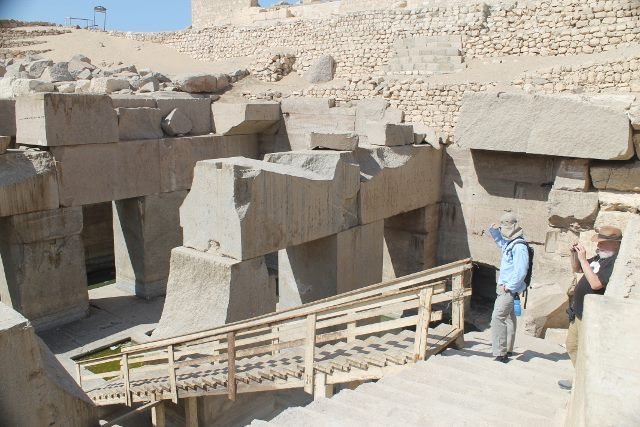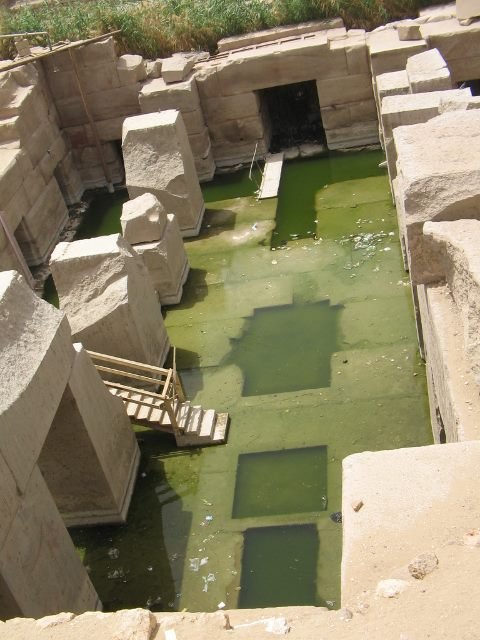Brien Foerster – MessageToEagle.com – The Osirion is located at Abydos, behind, below and connected to the Temple of Seti I.
When archaeologists like Flinders Petrie and Margaret Murray were working at Abydos in the early 20th century, they discovered the Osirion by accident while excavating Seti’s Temple.
The Osirion was originally constructed at a much lower level than the foundations of Seti’s temple, and although orthodox Egyptologists regard the two as contemporary, there is ample evidence that this is definitely NOT the case.


Plan of the Osirion, perfectly bilaterally symmetrical and looking more like a mechanical or energy plant than a series of tombs some believe?
The first thing that strikes the visitor is the enormous size of the red granite blocks used in its construction, and it is easy to draw architectural parallels with similar megalithic structures, like the Valley Temple, and the Sphinx Temple at Giza.
See also:
Why Was Pharaoh Khafre Almost Wiped Out From Historical Records?
Pharaoh Merneptah – His Giant Sarcophagus And Unique Victory Stele
Ancient Egyptians Had A Different Definition Of ‘Foreigners’
The similarities are inescapable – the stark and simple megalithic design, the lack of prolific inscriptions, and the fact that some of the larger stone blocks weigh up to 100 tons.
The origin of the ‘Flower of Life Pattern’ in the Osirion in Abydos has now become a little clearer.
Detailed photos show the existence of ancient Greek text alongside the six-fold circular patterns, which Drunvalo Melchizedek, called the ‘Flower of Life‘.
Greek texts show that this must have been placed here at a much later date than the construction of the Osirion; possibly during the Ptolemaic period in Egyptian history, which lasted from 332 to 30 BC.
However, it is just as possible that this design could have been influenced by Pythagoras, which would push the dating back to around 547 BC.
The designs are made of red ocher paint, and not etched in with a laser as some have claimed?
Written by Brien Foerster – MessageToEagle.com Contributor
About the author: Brien Foerster – is the author of several books. He resides in Peru with his wife. Visit his blog – Hidden Inca Tours – Exploring Ancient Peru and Beyond where you can follow his fascinating research projects and take part in the most wonderful tours of the ancient world.







